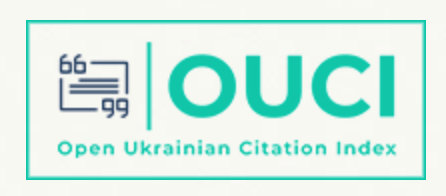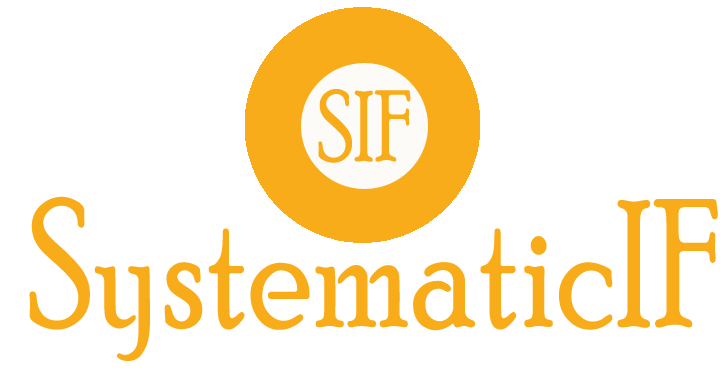Self-Regulation and a Regulatory Focus of Combatant Police Officers
Abstract
The article presents the results of a research of the particularities of the components of self-regulation and a regulatory focus of combatants – police officers who are directly involved in hostilities with the aggressor. The purpose of the present research is to determine the specifics of self-regulation and the peculiarities of a regulatory focus in combatant police officers having relevant experience compared to civil defense specialists. Methods. Inventory for researching self-regulation (J. Kuhl, A. Fuhrman, 1998), questionnaire for diagnosing a regulatory focus (Higgins et al., 2001). The empirical basis involved 182 respondents, divided into two groups: 92 persons – combatants of the special purpose regiment and 90 persons – police officers serving in civilian conditions. Results. Theoretical study showed that self-regulation and a regulatory focus are directly related to manifestations of individual activity in various spheres of life, including professional policing. It was empirically established that combatants demonstrate more evident self-motivation, self-relaxation, affective self-control, concentration, integration of contradictions, action focus in anticipation of success, prevention focus, and significantly lower rates of self-determination and promotion focus. Discussion and conclusions. It was substantiated that combatant police officers and police officers not involved in active hostilities have a peculiar to each group combination of components of self-regulation and a regulatory focus. The constellation of features characteristic of the first group serves as a psychological basis for managing activities and behavior under extreme conditions and external pressure, which trigger tension, contradictory experiences, and a regulatory attitude to prevent losses and failure of actions. The regulation structure in the second group ensures the implementation of the current activity, its planned performance, dealing with problems, and overcoming difficulties that result in the effectiveness of actions and achievement of success, which determine positive emotional self-esteem and motivate the subjects to future work and risk-taking.
Downloads
References
Baumeister R. F., Vohs K. D., Tice D. M. The strength model of self-control. Current Directions in Psychological Science. 2007. Vol. 16(6). P. 351–355. https://doi. org/10.1111/j.1467-8721.2007.00534.x
Bondarenko V., Okhrimenko, I., Yevdokimova, O., Sydorchuk, N., Dzhezhyk, O., Boichuk, I., Kalashnik, N., Kozlovets, M., Slyusar, V., Pavlenko, V., Biruk, N., Verbovskyi, I., Bloshchynskyi, I. Professional skills and competencies of the future police officers. International Journal of Applied Exercise Physiology. 2020. Vol. 9(5). P. 35–43. URL: http://www.ijaep. com/index.php/IJAE/ article/view/975
Carver C. S., Scheier M. F. On the self-regulation of behavior. Cambridge University Press. 1998. https://doi. org/10.1017/CBO9781139174794
Crowe E., Higgins E. T. Regulatory focus and strategic inclinations: Promotion and prevention in decision- making. Organizational Behavior and Human Decision Processes. 1997. Vol. 69(2). P. 117–132. https://doi.org/10.1006/obhd.1996.2675
Deckha N. The fourth Industrial Revolution, human skills, and online learning: Notes from the higher educational experiences of police officers. International Journal on Innovations in Online Education. 2020. Vol. 4, №4. URL: https://onlineinnovationsjournal.com/streams/editor-s-choice-articles/13940d146e995fa8. html
Shvets D., Yevdokimova O., Okhrimenko I., Ponomarenko Y., Aleksandrov Y., Okhrimenko S., Prontenko K. The New Police Training System: Psychological Aspects. Postmodern Openings. 2020. Vol. 11(SI 1). P. 200– 217. https://doi.org/10.18662/po/11.1sup1/130
Higgins E. T., Friedman R. S., Harlow R. E., Idson L. C., Ayduk O. N., Taylor A. Achievement orientations from subjective histories of success: Promotion pride versus prevention pride. European Journal of Social Psychology. 2001. Vol. 31(1). P. 3–23. https://doi. org/10.1002/ejsp.27
Higgins E. T., Tykocinski O. Self-discrepancies and biographical memory: Personality and cognition at the level of psychological situation. Personality and Social Psychology Bulletin. 1992. Vol. 18(5). P. 527–535. https:// doi.org/10.1177/0146167292185002
Higgins E. T. Beyond pleasure and pain. American Psychologist. 1997. Vol. 52(12). P. 1280–1300. https:// doi.org/10.1037/0003-066X.52.12.1280
Higgins E. T. Making a good decision: Value from fit. American Psychologist. 2000. Vol. 55. P. 1217–1230. https://doi.org/10.1037/0003-066X.55.1
Higgins E. T., Pinelli F. Regulatory focus and fit effects in organizations. Annual Review of Organizational Psychology and Organizational Behavior. 2000. Vol.7. P. 25–48. https://doi.org/10.1146/annurevorgpsych- 012119-045404
Higgins E. T. Promotion and prevention: Regulatory focus as a motivational principle. In M. P. Zanna (Ed.), Advances in experimental social psychology (Vol. 30, pp. 1–46). New York: Academic Press. 1998.
Halian I., Popovych I., Hulias I., Serbin Iy., Vyshnevska O., Kovalchuk Z., Pyslar A. Correlation between personality traits of young athletes and their level of self-efficacy. Journal of Physical Education and Sport. 2023a. Vol. 23(5). P. 1119–1129. https:// doi.org/10.7752/jpes.2023.05140
Halian I., Popovych I., Vovk V., Kariyev A., Poleshchuk L., Halian O. Correlation of the coach’s qualities and junior athletes’ self-efficacy. Journal of Physical Education and Sport. 2023b. Vol. 23(7). P 1621– 1630. https://doi.org/10.7752/jpes.2023.07199
Kuhl J., Beckmann J. (1994). Action and state orientation: Psychometric properties of the action control scales (ACS-90). Volition and personality: Action versus state orientation. Eds. J. Kuhl, Göttingen, Germany: Hogrefe, P. 47–59.
Kuhl J., Fuhrman A. Decomposing self-regulation and self-control: The Volitional Components Inventory. Motivation and self-regulation across the life span / Eds. J. Heckhausen, C. Dweck. N.Y., NY, US: Cambridge University Press. 1998. P. 15–49. https:// doi.org/10.1017/CBO9780511527869.003
Kuhl J., Koole S. L. Workings of the will: A functional approach. Handbook of experimental existentialpsychology / Eds. J. Greenberg, S.L. Koole, T. Pyszczynski. N.Y.: Guilford Press, 2004. P. 411–430.
Kuhl J., Quirin M., Koole S. L. The functional architecture of human motivation: Personality systems interactions theory. Advances in motivation science. 2021. Vol. 8. P. 1–62. https://doi.org/10.1016/ bs.adms.2020.06.001
Leventhal H., Brissette I., Leventhal E. A. The common- sense model of self-regulation of health and illness. In L. D. Cameron & H. Leventhal (Eds.). The self-regulation of health and illness behaviour (pp. 42–65). Routledge. 2003. https://psycnet.apa. org/record/2003-88028-003
Mabry K. Why today’s police officer should be required to be college‐educated. Campus Security Report. 2017. Vol. 14(3). P. 6–7. https://doi.org/10.1002/ casr.30282
Molden D. Motivated strategies for judgment: How preferences for particular judgment processes can affect judgment outcomes. Social and Personality Psychology Compass. 2012. Vol. 6/2. P. 156–169, https:// doi.org/10.1111/j.1751-9004.2011.00424.x
Molines M., Mifsud M., Perrier A. Motivated for Serving: the Impact of Self Regulatory Focus on Self-Sacrifice and Engagement. Academy of Management Proceedings. 2020. Vol. 1. https://doi.org/10.5465/AMBPP. 2020.12157abstract
O’Brien B., Oyserman D. The shield of defense or the sword of prosecution? How self-regulatory focus relates to responses to crime. Journal of Applied Social Psychology. 2010. Vol. 40(8). Р. 1849–1867. https://doi. org/10.1111/j.1559-1816.2010.00642.x
Popovych I., Halian I., Lialiuk G., Chopyk R., Karpenko Ye., Melnyk Yu. Research of young female handball players’ self-actualizing mental states. Journal of Physical Education and Sport. 2022. Vol. 22(7). P. 1599–1607. https://doi.org/10.7752/jpes.2022.07201
Prokhorenko L., Popovych I., Sokolova H., Chumaieva Yu., Kosenko Yu., Razumovska T., Zasenko V. Gender differentiation of self-regulating mental states of athletes with disabilities: comparative analysis. Journal of Physical Education and Sport. 2023. Vol. 23(2). P. 349–359. https://doi.org/10.7752/ jpes.2023.02042
Prontenko K. V., Okhrimenko I. М., Yevdokimova O. O., Mannapova K. R., Filonenko V. M., Tverdokhvalova I. L., Bondarenko L. O. Peculiarities of Formation of Cadets’ Psychological Resilience and Physical Readiness for Combat Stress. Wiadomości lekarskie. 2023; Vol. 76(6). P. 1450–1456. https://pubmed. ncbi.nlm.nih.gov/37463381/
Shevchenko R., Hrys A., Pavliuk M., Stynska V., Babiak O., Zavatskyi V., Popovych I. A Research of Post-Traumatic Stress and Adaptation Disorders of Servicemen after Being in a Combat Situation at the Hospitalization Stage. Revista Inclusiones. 2020. Vol. 7(4). P. 74–87. https://revistainclusiones.org/index.php/ inclu/article/view/15 39
Tseng H. C., Kang L. M. How does regulatory focus affect uncertainty towards organizational change? Leadership & Organization Development Journal. 2008. Vol. 29(8). Р. 713–731. https://doi. org/10.1108/01437730810916659
Authors who publish with scientific journal agree to the following terms:
• All scientific papers may be freely copied and distributed on any medium and in any format, provided that the references to the initial data of the scientific work are indicated.
• Authors retain copyright and grant the journal right of first publication with the work simultaneously licensed Creative Commons Attribution License .
• Authors are able to enter into separate, additional contractual arrangements for the non- exclusive distribution of the journal’s published version of the work (institutional repository, your website, monograph), with an acknowledgement of its initial publication in this journal.





































